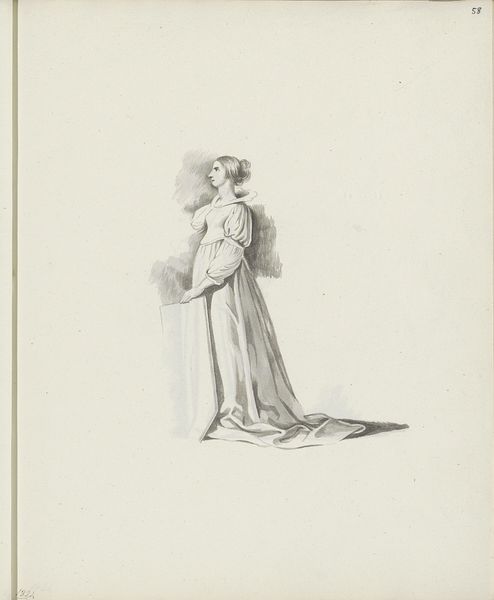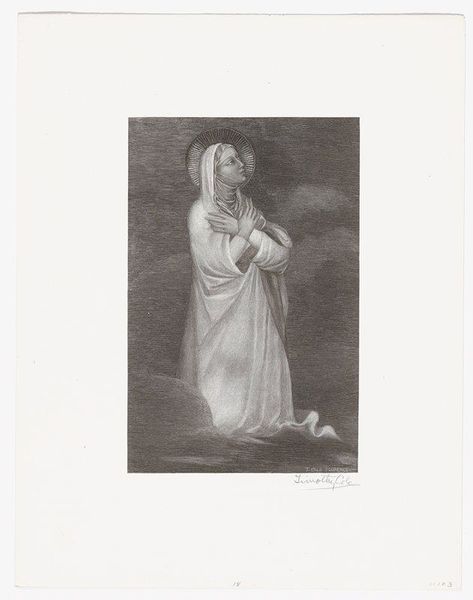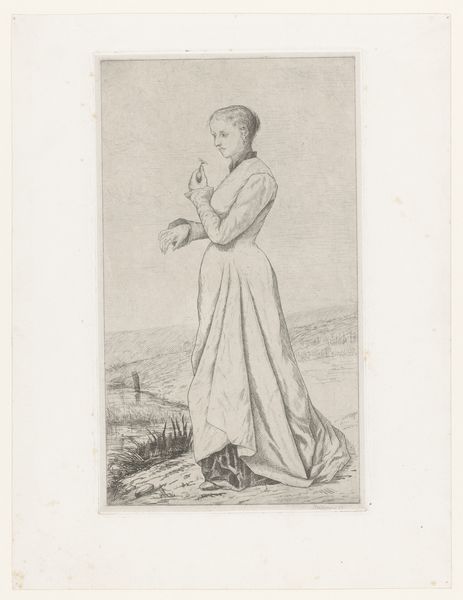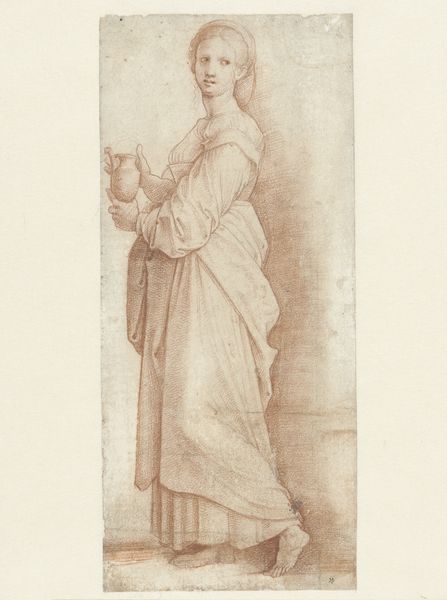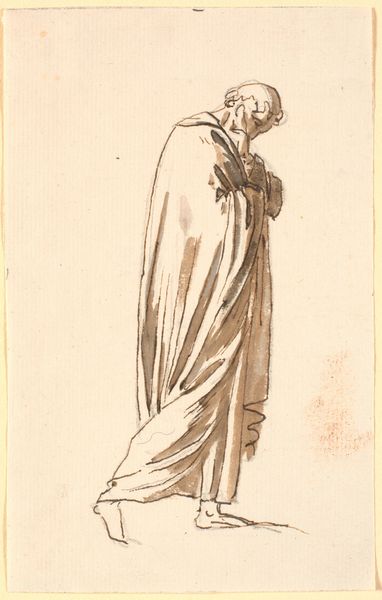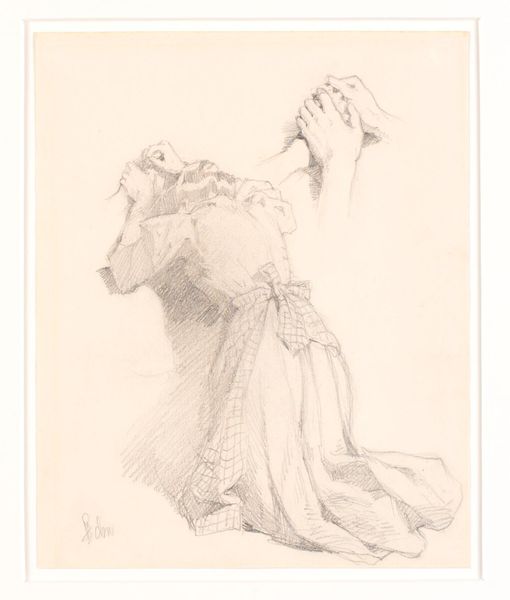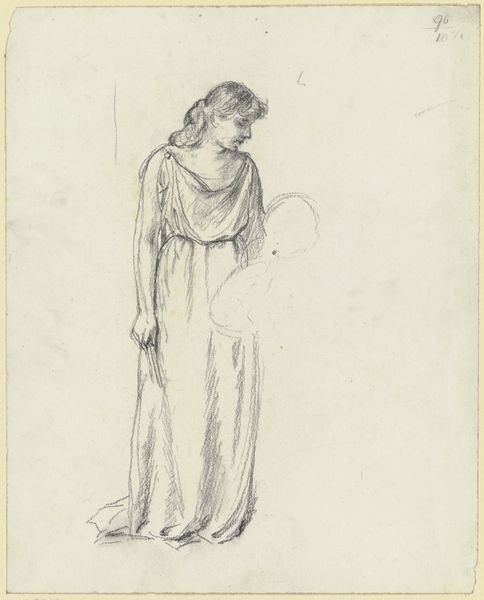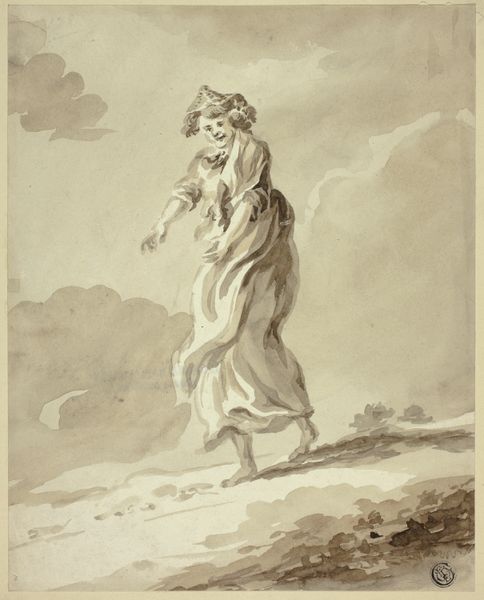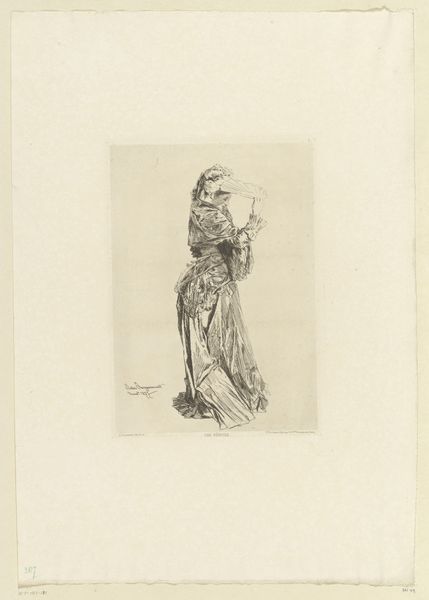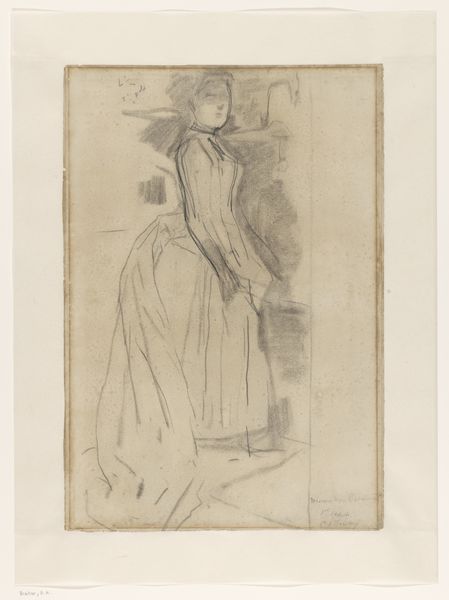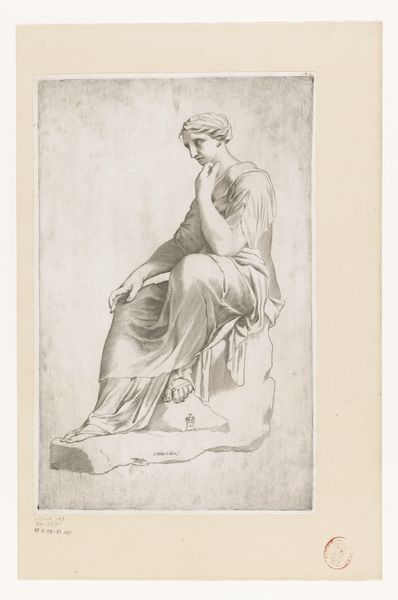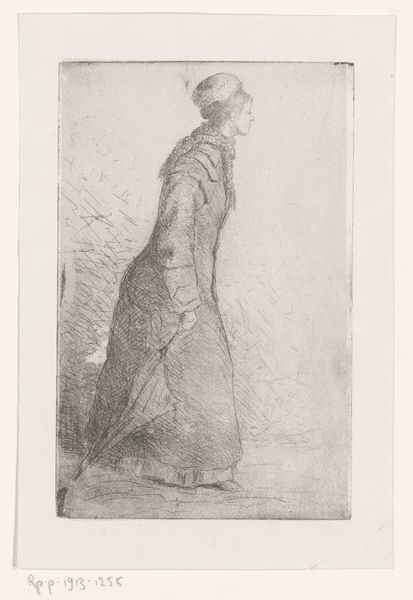
drawing, watercolor
#
portrait
#
drawing
#
water colours
#
figuration
#
watercolor
#
romanticism
#
watercolour illustration
#
genre-painting
#
watercolor
Dimensions: 26.8 x 20.5 cm
Copyright: Public domain
Curator: This watercolor drawing, "At the Mont de Piété", was created by Paul Gavarni around 1850. Editor: It's a somber image. The colors are muted, almost drained. It speaks of poverty and hardship, the woman seems weary, almost defeated. Curator: "Mont de Piété" translates to "mountain of piety," but it was actually the French term for a pawnshop, usually run by charitable organizations as a social service providing small loans at modest interest. Editor: Ah, now that gives her weary pose context. The bag in her hand, it isn’t heavy with treasures, but most likely her last meager possession to hock for money. The gesture reads universal, a visual language of distress recognizable across cultures and time. Curator: Precisely. Gavarni was known for his depictions of Parisian life, often focusing on the working class and marginalized figures. His art provides a lens into the social realities of his time, portraying individuals often overlooked in grand historical narratives. The piece invites consideration about the role of social welfare and the experience of poverty. Editor: Even the colours mirror that melancholy. Brown and dull violet create an atmosphere of dust, perhaps evoking a wider cultural narrative of disenfranchisement. What might the bonnet she’s wearing signify, beyond mere fashion? Curator: Bonnets at the time signified various social classes or circumstances. While I cannot infer definitively, its simple style in conjunction with her posture may infer working-class status, highlighting societal hierarchies and class disparities of 19th century Parisian life. Gavarni also captured a shifting urban landscape amid rapid industrialization, and images like this reveal that progress wasn't necessarily benefiting all. Editor: It reminds us of the power of empathy and representation. Looking at a seemingly simple artwork allows us to consider a complex history. It’s a story told without words. Curator: Indeed, art often serves as a silent witness to human experiences that shape our understanding of past and present.
Comments
No comments
Be the first to comment and join the conversation on the ultimate creative platform.
